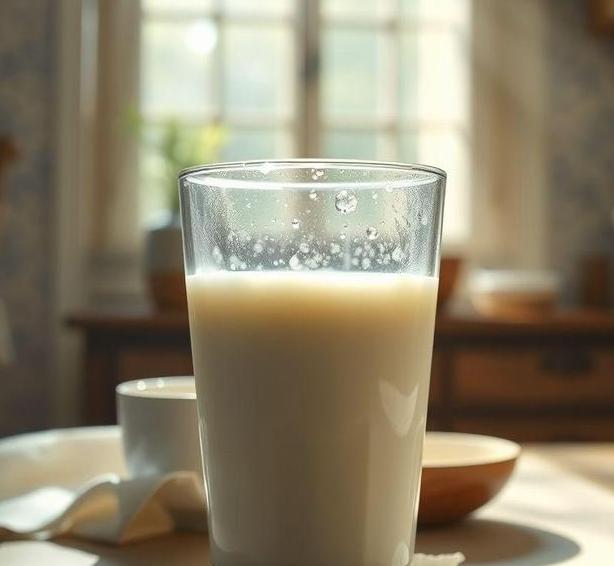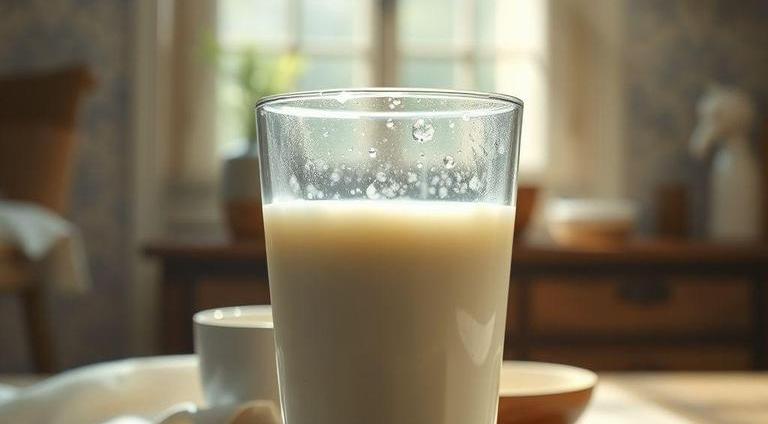Milk is a staple in many households, used for everything from a comforting drink to an essential ingredient in cooking and baking. Whether you love it in your morning coffee or you’re whipping up a batch of pancakes, milk is versatile. But how often have you found yourself staring at a carton or bottle, wondering, Is this still good?
It’s a legitimate question. Unlike some other foods, milk’s shelf life is a bit tricky, and its spoilage can be subtle. So, how do you know when milk has gone bad? Can it even go bad? This guide will not only answer those questions but also give you some expert tips on extending its freshness and avoiding waste.
Can Milk Go Bad?
Yes, milk can absolutely go bad. As a perishable liquid, it is highly susceptible to bacterial growth, which can cause spoilage. Milk naturally contains water, fat, and proteins, making it an excellent environment for bacteria to thrive if it’s not handled or stored properly.
Milk can go bad in two main ways:
- Bacterial contamination: This happens when harmful bacteria like Lactobacillus or Pseudomonas get into the milk. The bacteria break down the lactose and proteins, causing sourness and a change in texture.
- Oxidation: When milk is exposed to air, especially after being opened, oxygen can cause the fats in milk to break down, which leads to an off-taste and odor.
Shelf Life For Milk

The shelf life of milk depends on several factors, including the type of milk, how it was processed, and how it is stored. Here’s a breakdown:
Common Signs Of Spoilage
You don’t need to be a scientist to spot spoiled milk. Here are some common signs to look for:
- Smell: This is the most obvious sign. Spoiled milk has a very sour, unpleasant odor, often compared to a fermented smell. If it smells like something went wrong in the dairy process, it probably has.
- Taste: Sourness is the taste of spoilage, and it can linger on your tongue. A small sip should reveal whether milk has gone sour or not.
- Texture: Milk that’s gone bad may have a curdled texture, where you can see clumps or a thick consistency that is different from its usual smoothness. This is often caused by the breakdown of proteins.
- Appearance: The milk may appear lumpy or have a change in color (e.g., a slight yellowing). If you see any odd-colored patches or the milk seems discolored, it’s time to toss it.
- Separation: Some level of separation is normal, especially with whole milk. However, excessive separation, like a layer of watery liquid at the top with clumps at the bottom, can be a sign it’s no longer fresh.
How To Store Milk?

Proper storage is key to keeping milk fresh for as long as possible. Here are some tips:
-
Refrigeration Is A Must
- Milk should always be stored in the refrigerator at a temperature of 35-40°F (1.6-4.4°C). Any warmer, and the milk may spoil more quickly.
-
Keep It Closed
- Air and exposure to light are the biggest enemies of milk. Keep the carton or bottle tightly closed. If you’re using a jug or reusable container, make sure the lid is secure to prevent any contaminants from entering.
-
Store In The Coldest Part Of The Fridge
- Place milk at the back of the fridge where the temperature is the most consistent and coldest. Avoid storing milk in the door, as it’s the warmest part due to frequent opening.
-
Don’t Leave Milk Out Too Long
- If milk has been left out at room temperature for more than 2 hours, it’s at risk of bacterial growth and should be discarded.
-
Use Glass Containers For Plant-Based Milk
- For non-dairy milks, storing them in glass containers helps to preserve flavor and quality for longer periods. Avoid plastic containers that may cause the milk to develop off-flavors.
Expert Tips
- Check Expiration Dates: Always take note of the ’sell by’ or ’use by’ date on the milk carton. While milk may still be fine a few days after, it’s a good starting point for determining freshness.
- Don’t Overbuy: If you’re buying milk in bulk, make sure you’ll consume it before it expires. Fresh milk doesn’t last forever, and buying too much increases the chance of waste.
- Freeze It for Later: If you know you won’t use milk in time, freezing is an option. Simply pour it into a freezer-safe container (leave some space for expansion) and use it within 1-3 months. It may separate when thawed, but shaking or stirring should fix the texture.
- Smell Test: Always smell the milk before using it in recipes. If it smells off, it’s better to be safe than sorry. Sometimes the milk will look fine but still have a sour smell or taste.
- Avoid Cross-Contamination: Don’t drink directly from the carton. The bacteria in your mouth can contaminate the milk, shortening its shelf life.
FAQs
Can Milk Go Bad If It’s Left Out At Room Temperature?
Yes, milk can go bad if left out at room temperature for more than two hours. Bacteria multiply rapidly at temperatures above 40°F (4°C), causing the milk to spoil and become unsafe to drink.
How Long Can Milk Last After The Expiration Date?
Milk can last anywhere from 5 to 7 days past its expiration date if stored properly in the refrigerator. However, its freshness and safety depend on how it has been handled before and after the date.
How Can I Tell If Milk Has Gone Bad?
You can tell milk has gone bad by its sour smell, off taste, and curdled texture. Additionally, if the milk has changed color or shows signs of mold, it is spoiled.
What Happens If You Drink Spoiled Milk?
Drinking spoiled milk can lead to food poisoning, which may result in symptoms like nausea, vomiting, diarrhea, and stomach cramps due to harmful bacteria like Salmonella or E. coli.
Can Milk Spoil Even If It’s Kept Refrigerated?
Yes, milk can spoil in the refrigerator, particularly if it has been stored improperly or left open. Bacteria can still grow at refrigerator temperatures, albeit at a slower rate.
Does Milk Spoil Faster If It’s Opened?
Yes, once milk is opened, it is exposed to air and bacteria, which can cause it to spoil more quickly. An opened carton typically lasts 5-7 days in the fridge, while unopened milk can last longer.
Can Milk Spoil In The Freezer?
While freezing milk can prolong its shelf life, it can change the texture and taste once thawed. The milk may appear separated or grainy, but it is still safe to drink if stored properly and used within a short period after thawing.
Is Milk Safe To Drink If It Smells Sour But Looks Normal?
No, if milk smells sour, it is likely spoiled, even if it looks normal. The sour smell is an indicator of lactic acid buildup from bacterial growth, which makes it unsafe to consume.
Why Does Milk Spoil Faster In Hot Weather?
In hot weather, the temperature rises above the ideal refrigeration range (below 40°F or 4°C), which accelerates the growth of bacteria in the milk, causing it to spoil faster.
Can Ultra-pasteurized Milk Spoil?
Yes, even ultra-pasteurized milk can spoil, though it lasts longer than regular milk due to the higher temperature used during pasteurization. It still requires proper storage and has a limited shelf life.